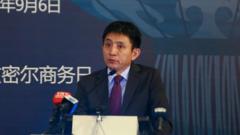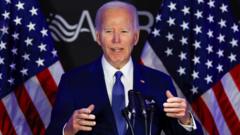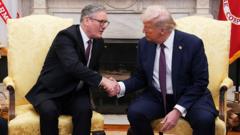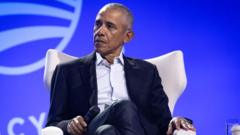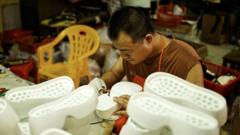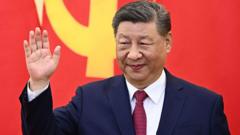In the face of an escalating tech rivalry with China, former President Donald Trump has put forward a strategic push for semiconductor production in the US, asserting that tariffs and domestic manufacturing will usurp Asia's lead in the industry. However, experts warn this ambitious initiative faces elaborate logistical, workforce, and competitive hurdles that may leave the US trailing.
The Future of Semiconductor Manufacturing: Trump's Bold Gamble Against Asia

The Future of Semiconductor Manufacturing: Trump's Bold Gamble Against Asia
As the US embarks on an ambitious plan to revitalize its semiconductor industry, the challenges posed by Asia's dominance loom large.
The semiconductor industry has been identified as a critical battleground in the competition between the US and China, particularly in a world where microchips underpin virtually every piece of modern technology, from smartphones to military equipment. While chips were pioneered in the United States, manufacturing has largely shifted to Asia over the past few decades, with Taiwan, South Korea, and China taking the lead in the production of high-precision chips.
At a recent industry summit, Gina Raimondo, who previously served as the US Commerce Secretary, pointed out that the US has historically "dropped the ball" in chip manufacturing, yielding ground to Asian nations. Trump's approach promises to reignite production at home, but he faces fierce opposition in the form of complex supply chains and a shortage of skilled labor within American factories.
Trump's tariff-centric strategy seeks to compel companies, particularly Taiwan Semiconductor Manufacturing Company (TSMC), to relocate their operations to the US. He has threatened TSMC with an exorbitant tax if they fail to establish manufacturing plants on American soil. Such volatility, coupled with existing logistical challenges, may undermine efforts to adapt quickly enough to the evolving global landscape.
Currently, manufacturing is an intricate web of international collaboration. The production chain starts with raw materials, often sourced from China, and extends through a series of global locations from Taiwan to Vietnam, where chips are packaged and assembled. Each step requires an investment of time and resources not easily replicated.
As countries like China and South Korea offer significant subsidies to boost their semiconductor sectors, the US has sought to enact similar measures through initiatives such as the Chips and Science Act. This legislation aims to encourage local production through grants, but companies like TSMC and Samsung have reported issues such as rising costs, hiring challenges, and regulatory roadblocks since making significant investments in the US earlier.
While Trump remains optimistic about reshoring chip production to revive the American workforce, experts express skepticism over the current U.S. capabilities. TSMC's plants in the US may be functional, but experts argue they are lagging behind Taiwan's advanced production facilities, which have taken decades to develop.
Although the Biden administration has pursued policies aimed at fostering new manufacturing hubs, the geostrategic implications of Trump's isolationist approach raise questions. Countries like India have emerged as potential candidates for increased chip manufacturing integration due to their lower labor costs and strong educational system, but they also face obstacles such as land acquisition and resource management.
Industry connections could provide a critical pressure point for Trump. Major firms like Apple and Microsoft hold substantial influence over tariffs and policy, as demonstrated by their lobbying efforts during trade negotiations. Ultimately, the creation of a prosperous semiconductor ecosystem depends on a return to global cooperation and innovation rather than isolationist policies.
In summary, as tech competition intensifies globally, the US faces a steep uphill climb to reclaim its semiconductor manufacturing legacy. The success of Trump's tariff-heavy strategy remains uncertain, caught in the crosswinds of domestic pressures while the well-established Asian semiconductor industry continues to flourish.


